
A cartoon is a type of visual art that is typically drawn, frequently animated, in an unrealistic or semi-realistic style. The specific meaning has evolved, but the modern usage usually refers to either: an image or series of images intended for satire, caricature, or humor; or a motion picture that relies on a sequence of illustrations for its animation. Someone who creates cartoons in the first sense is called a cartoonist, and in the second sense they are usually called an animator.

Who Framed Roger Rabbit is a 1988 American fantasy comedy film directed by Robert Zemeckis from a screenplay written by Jeffrey Price and Peter S. Seaman. It is loosely based on the 1981 novel Who Censored Roger Rabbit? by Gary K. Wolf. The film stars Bob Hoskins, Christopher Lloyd, Stubby Kaye, Joanna Cassidy, and the voice of Charles Fleischer. Combining live-action and animation, the film is set in an alternate history Hollywood in 1947, where humans and cartoon characters co-exist. Its plot follows Eddie Valiant, a private investigator with a grudge against toons, who must help exonerate Roger Rabbit, a toon framed for murder.
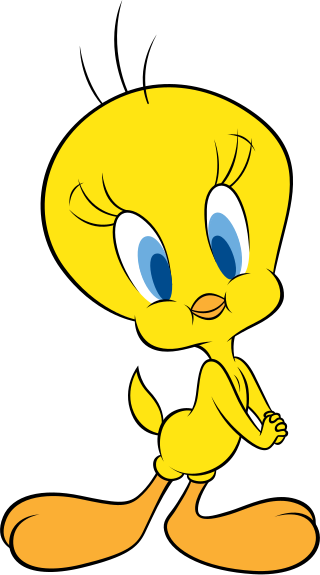
Tweety is a yellow canary in the Warner Bros. Looney Tunes and Merrie Melodies series of animated cartoons. The name "Tweety" is a play on words, as it originally meant "sweetie", along with "tweet" being an English onomatopoeia for the sounds of birds. His characteristics are based on Red Skelton's famous "Junior the Mean Widdle Kid." He appeared in 46 cartoons during the golden age, made between 1942 and 1964.
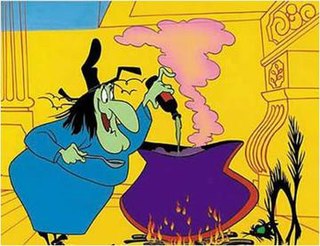
Witch Hazel is an animated cartoon character in the Warner Bros. Looney Tunes and Merrie Melodies series of cartoons and TV shows. Witch Hazel is a fairy tale witch antagonist with green skin, a round figure, bulbous facial features, and a single tooth. The name is a pun on the witch-hazel plant and folk remedies based on it.

Speech balloons are a graphic convention used most commonly in comic books, comics, and cartoons to allow words to be understood as representing a character's speech or thoughts. A formal distinction is often made between the balloon that indicates speech and the one that indicates thoughts; the balloon that conveys thoughts is often referred to as a thought bubble or conversation cloud.

Red Hot Riding Hood is an animated cartoon short subject, directed by Tex Avery and released with the movie Dr. Gillespie's Criminal Case on May 8, 1943, by Metro-Goldwyn-Mayer. In 1994, it was voted number 7 of The 50 Greatest Cartoons of all time by members of the animation field, making it the highest ranked MGM cartoon on the list. It is one of Avery's most popular cartoons, inspiring several of his own "sequel" shorts as well as influencing other cartoons and feature films for years afterward.
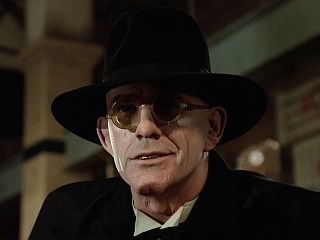
Judge Doom is a fictional character and the main antagonist in the 1988 film Who Framed Roger Rabbit, portrayed by Christopher Lloyd. He is depicted as the much-feared, cruel, and evil judge of Toontown, who later in the film is revealed as the mastermind behind the framing of the titular character and the murder of protagonist Eddie Valiant's brother.
Gary K. Wolf is an American author. He is best known as the author of Who Censored Roger Rabbit? (1981), which was adapted into the hit feature-length film Who Framed Roger Rabbit (1988).
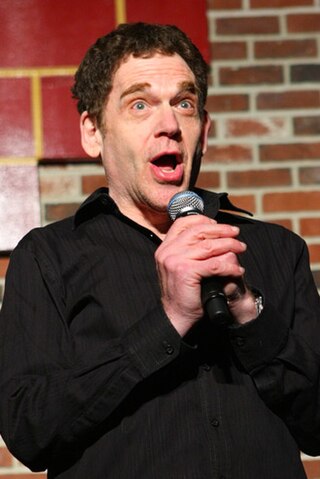
Charles Fleischer is an American actor, stand-up comedian, musician, and writer, best known for appearing in films such as Who Framed Roger Rabbit, A Nightmare on Elm Street, The Polar Express, Rango, Chip 'n Dale: Rescue Rangers, and We're Back! A Dinosaur's Story. He made a cameo in Back to the Future Part II and also reprised the role of Roger Rabbit in the Roger Rabbit theatrical shorts. After beginning his career on the comedy club circuit, Charles Fleischer's first big break in comedy television came when he made an appearance on Rowan & Martin's Laugh-In.

Roger Rabbit's Car Toon Spin is a dark ride located at the Disneyland and Tokyo Disneyland theme parks, based on the 1988 Disney/Amblin film Who Framed Roger Rabbit. Both versions of the attraction are located in Mickey's Toontown. The Disneyland version opened on January 26, 1994, a year after the Mickey's Toontown area opened, and the Tokyo Disneyland version opened on April 15, 1996. In December 2021, the Disneyland version was updated to include a new plot element of Jessica Rabbit in the role of a detective who is determined to stop a crime wave in Toontown.
"The Merry-Go-Round Broke Down" is a song written in 1937 by Cliff Friend and Dave Franklin and published by Harms Inc., New York. It is best known as the theme tune for the Looney Tunes cartoon series and Merrie Melodies reissued cartoon series produced by Warner Bros. Cartoons, used from 1937 to 1969.

Ricardo Siri, better known by the name Liniers, is an Argentine cartoonist.

Eddie Valiant is a fictional character and the main protagonist of the novel Who Censored Roger Rabbit?, and the film adaptation, Who Framed Roger Rabbit.

Who Framed Roger Rabbit is a media franchise owned by The Walt Disney Company and Amblin Entertainment, that began with the 1988 film, Who Framed Roger Rabbit, itself based on a book titled Who Censored Roger Rabbit? by Gary K. Wolf.

Elmer J. Fudd is an animated cartoon character in the Warner Bros. Looney Tunes/Merrie Melodies series and the archenemy of Bugs Bunny alongside Yosemite Sam. His aim is to hunt Bugs, but he usually ends up seriously injuring himself and other antagonizing characters. He speaks in an unusual way, replacing his Rs and Ls with Ws, so he often refers to Bugs Bunny as a "scwewy" or "wascawwy (rascally) wabbit". Elmer's signature catchphrase is, "Shhh. Be vewy vewy quiet, I'm hunting wabbits", as well as his trademark laughter.
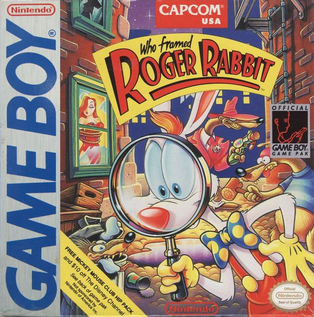
Who Framed Roger Rabbit is a 1991 overhead adventure game by Capcom for the Game Boy released in North America and Europe. Based on the 1988 film of the same title, it is one of the earliest games designed by Shinji Mikami.
Roger Rabbit is the title character in the fantasy comedy film, Who Framed Roger Rabbit (1988), directed by Robert Zemeckis.

Jessica Rabbit is a fictional character in the novel Who Censored Roger Rabbit? and its film adaptation, Who Framed Roger Rabbit. She is depicted as Roger's human toon wife in various Roger Rabbit media. Jessica is renowned as one of the best-known sex symbols in animation. She is also well-known for the line: "I'm not bad, I'm just drawn that way."
The Roger Rabbit shorts are a series of three animated short films produced by Walt Disney Feature Animation from 1989 to 1993. They feature Roger Rabbit, the animated protagonist from Who Framed Roger Rabbit (1988), being enlisted the task of caring for Baby Herman while his mother is absent, resulting in a plot defined by slapstick humor and visual gags. Each short concludes with a sequence involving live-action and animation, where the characters interact with live-action human beings, akin to the 1988 film. Droopy Dog from MGM makes a cameo in all of the shorts.

Roger Rabbit is a fictional animated anthropomorphic rabbit. The character first appeared in author Gary K. Wolf's 1981 novel, Who Censored Roger Rabbit? In the book, Roger is second banana in a popular comic strip, "Baby Herman". Roger hires private detective Eddie Valiant to investigate why his employers, the DeGreasy Brothers, have reneged on their promise to give Roger his own strip. When Roger is found murdered in his home, Valiant sets out to look for the killer, with the help of Roger's "doppel".
















